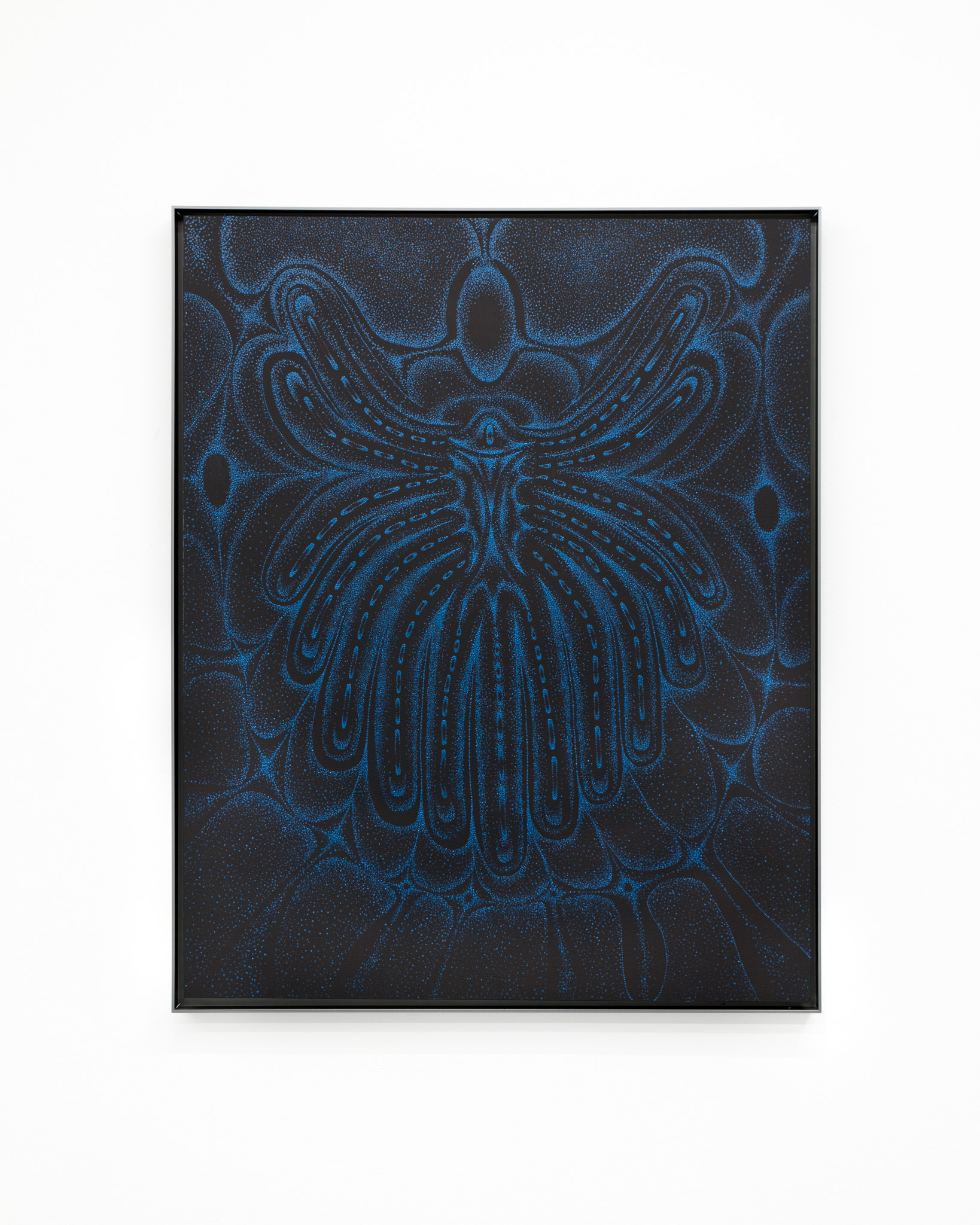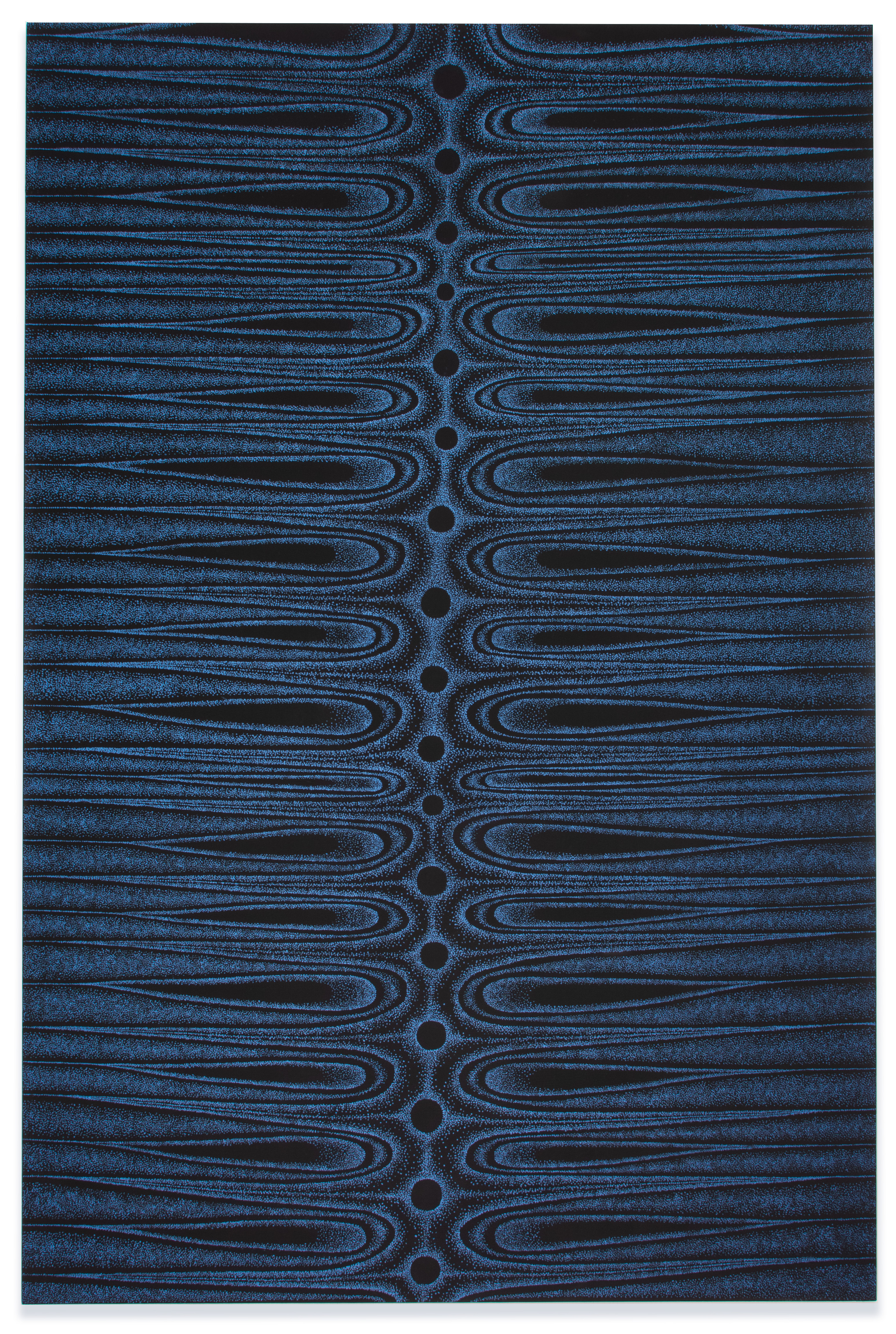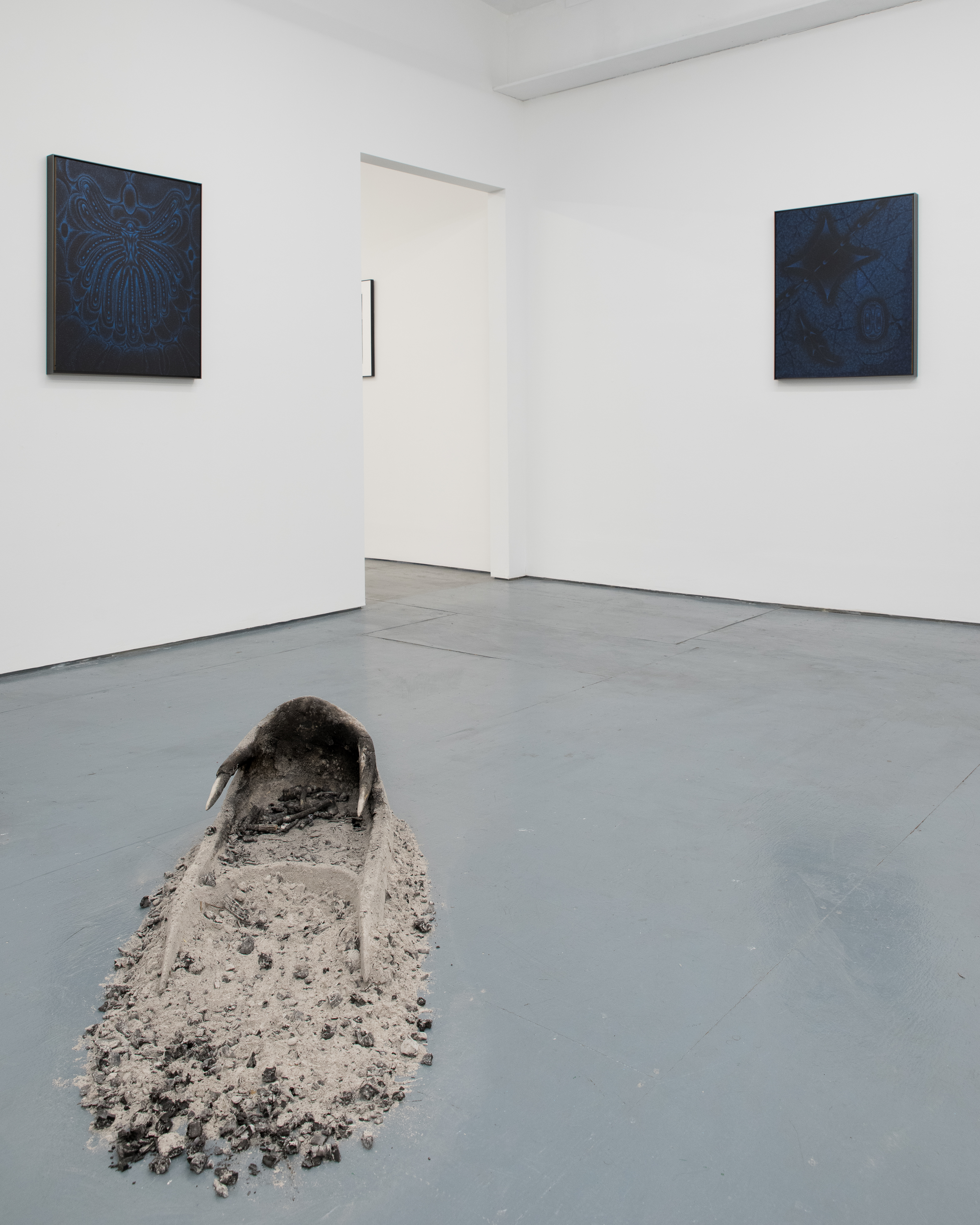444
Tiger Strikes Asteroid, New York
April 7 - May 7 2023

Kusum, 2023, 40x60”, crushed crystal, mica, pigment on birch



Ma, 2022, 24x30”, crushed crystal, mica, pigment on birch

Old Echo, 2023, 40x60”, crushed crystal, mica, pigment on birch




Blooming in the Dark II, 2022, 24x30”, crushed crystal, mica, pigment on birch

Wood Entity, 2023, 24x30”, Aluminum



Text
Text
“Attention is the beginning of devotion.”[1]
Ragini Bhow’s approach to studio practice rhymes with animism or panpsychism, but perhaps, is best described as relational: gathering us to relate in deep time, with explicitly conscious beings present. In this context, painting and sculpture become tools for bringing to light, becoming aware of, and tending to primordial relationships. In Bhow’s words, understanding her practice demands the reciprocity of “being seen by the work.” 444 is an exhibition that sees you, seeing it. “Seeing-as-consumption” won’t track here, as the work requires slowing down. Bhow’s work invokes a different temporality and materiality of memory. This embodied, relational, and ecological sense of timing and perceiving in 444 has a paradoxical effect: culturally dislocating, yet grounding; alien, yet importantly, connects, centers, and remembers.
Throughout the show, viewers encounter imprints of seemingly interdimensional entities, stretched with tension. Bhow first witnesses these image-forms in a hypnagogic state that she achieves through trance, divination, and scrying. Through repetition and ritual, this sight has developed into a practice she understands as “seeing-as-communing.” Looking closely at the works in 444 performs the memory of their making: of the attention taken to reconfigure and constellate iridescent blue dots over a void, as in the paintings, or the alchemy of her sculptures. For example, Bones left behind is modeled after the chulha, a ground-level oven made of mud, clay, or stone that is commonly used in India. Once carved, the artist lights a fire in the base, where the ritualistic burning becomes a form of writing, producing residual ash and staining that traces the transmutation of raw material.
In painting, Bhow gives herself strict parameters in terms of color, using hand-made pigments to place emphasis on the image that emerges processually, through indeterminate and intuitive mark-making. The artist describes this as “the experience of navigating a dark room while your eyes slowly adjust.” In Blooming in the dark II, it feels like this handling collapses the cosmic, cellular, and atomic scale. The figure in the lower left corner brings to mind current scientific research proposition that “mitochondria are social organelles,” advocating for a theoretical shift towards recognizing kinships across levels of biological complexity.[2] As trans-diasporic thinker Madina Tlostanova has recently written: “Relationality is being rediscovered by many scientists, yet most of them are unaware that this principle has been for centuries fundamental for the matristic indigenous cultures and many non-modern local communities grounded in a firm link of humans with their land, with their natural-social environments, with inter-generational communicative codes, grounded in the notion of complex interrelatedness of everything and everyone in the universe.”[3]
Aligned with sociologist Rolando Vasquez’s formulation of “decolonial aesthesis,” Bhow’s practice moves “away from a logic of representation, to a verbality of reception.”[4] The works in 444 act as carriers for ways of sensing, relating, and timing that have been negated under capitalist modernity and colonial history, which Bhow recovers mediumistically. The synchrony of the exhibition’s title points to many correspondences: 4 sides, angles, and directions recurrent in the show; fire, earth, air, water; the 4 seasons; the 4th house in horoscopic astrology, the subterraneous point of sky diametrically opposing solar noon. Symbolically, this “fourth place” is associated with being below the ground, as in foundations, roots, ancestry, midnight, and matters kept private or secret.[5] How might Bhow’s approach to art making be a means of facing spiritual crisis and re-linking a sense of the ancient future?
— Text by Meghana Karnik
[1] Mary Oliver, Upstream: Selected Essays (London: Penguin. 2016).
[2] Martin Picard, Carmen Sandi, “The social nature of mitochondria: Implications for human health,” Neuroscience & Biobehavioral Reviews (Amsterdam: Elsevier. 2021.) Volume 120, 595-610.
[3] Maria Tlostanova, “The movement of a hand as a whole: Central Asian ‘Davra’ as process of communal learning/healing/worlding,” Chilltan: Shapeshifting eternal spirits from Central Asia (Kassel: documenta15. 2022).
[4] Vistas of Modernity: decolonial aesthesis and the end of the contemporary (Amsterdam: Mondriaan Fund. 2020). 14.
[5] Chris Brennan, Hellenistic Astrology: The Study of Fate and Fortune (Colorado: Amor Fati Publications. 2017). Chapter 10: “The Twelve Places” 320-357.